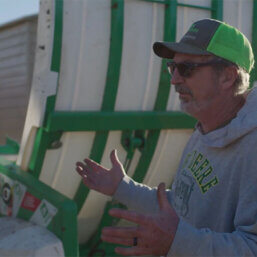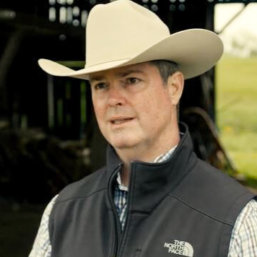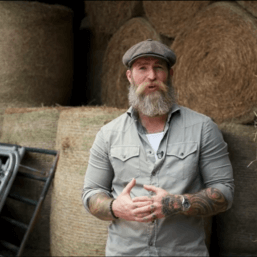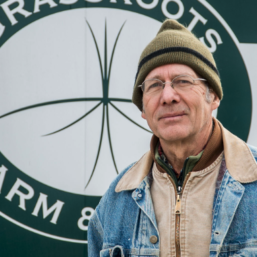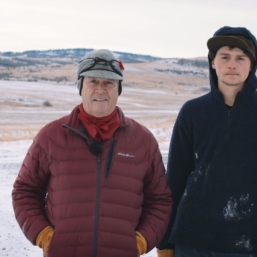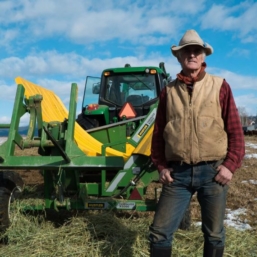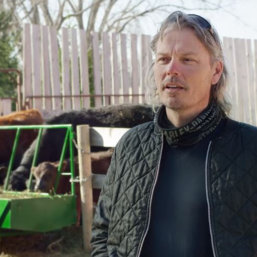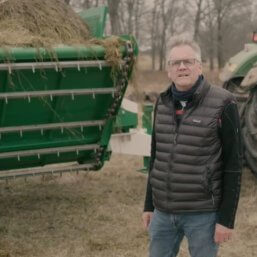What is Bio-Carpeting?
Bio-Carpeting is a strategic feeding methodology that mimics natural grazing habits and allows you to control animal traffic to reduce hay waste and pasture damage.
Revitalize your pastures, Boost your profits
A proven, natural approach to pasture management
Imagine a pasture where your livestock graze freely, just as nature intended. No more overgrazed patches, no more wasted hay, and no more concentrated manure buildup. That’s the power of Bio-Carpeting, a revolutionary feeding method that mimics the natural grazing patterns of wild herds.
Bio-Carpeting is a simple yet powerful approach:
- Spreads Out Feed: Instead of piling hay in one spot or in a hay ring, it’s unrolled in a long, fluffed-up, even windrow across your pasture.
- Encourages Natural Grazing: This encourages your animals to spread out and graze naturally, just like they would on the open range. Plus, it offers equal access to feed to all animals.
- Promotes Even Manure Distribution: As your livestock graze, they naturally fertilize the entire pasture, boosting soil health and forage growth.
- Reduces Waste and Compaction: By avoiding concentrated feeding areas, you prevent overgrazing, soil compaction, and the accumulation of manure in one spot, boosting grass re-growth.
The result? Healthier pastures, healthier livestock, and a more profitable farm.
How Hustler Bio-Carpeting Works
It’s as simple as 1-2-3:
- Unroll, Don’t Dump: Instead of piling hay in a single location, our specialized Hustler bale unrollers gently unfurl it in a long, fluffy windrow across your pasture. This encourages your livestock to spread out and graze naturally, preventing overgrazing and soil compaction.
- Let Nature Do Its Thing: As your animals graze along the windrow, they naturally distribute their manure across the pasture, acting as a slow-release fertilizer. This promotes even nutrient distribution, enhancing soil health and boosting forage growth.
- Rotate and Repeat: By regularly moving the feeding area with your Hustler bale feeder or processor, you ensure that no single area is overgrazed or overly fertilized. This allows your pasture to recover and thrive, guaranteeing a continuous supply of nutritious forage for your livestock. You can additionally drag harrows across the pasture to break up any pile of manure.
The Benefits of Hustler Bio-Carpeting:
- Healthier Soil: Reduced compaction and improved nutrient distribution lead to richer, more fertile soil.
- Increased Forage Production: Healthier soil naturally leads to more abundant and nutritious grass growth.
- Reduced Input Costs: Bio-Carpeting helps you rely less on synthetic fertilizers, saving you money in the long run.
- Happier, Healthier Livestock: Animals allowed to graze naturally are generally less stressed and more productive.
- Environmental Stewardship: Minimized soil erosion and nutrient runoff protect water quality and the ecosystem.
Ready to see the difference Hustler Bio-Carpeting can make on your farm?
How much hay can you save?
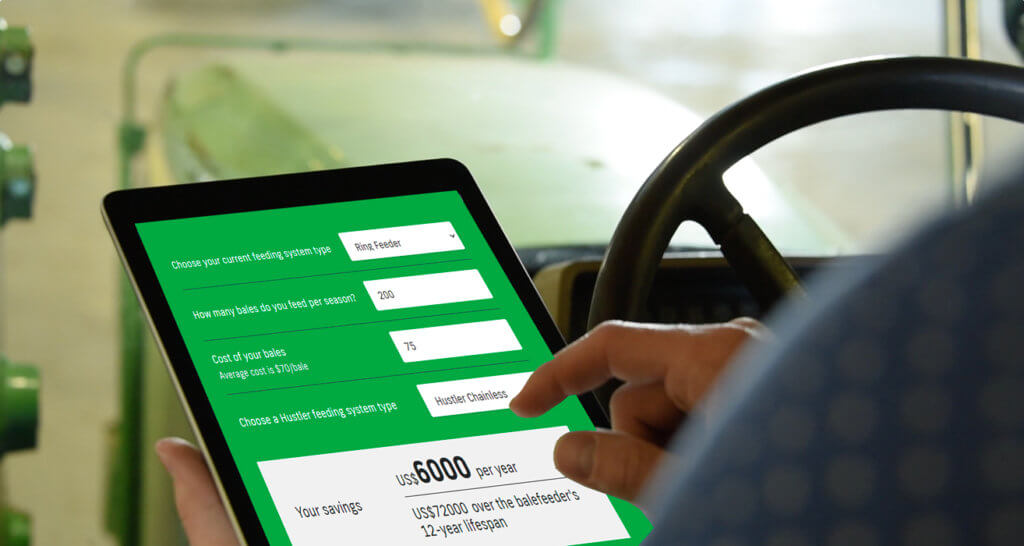
Listen to our FGFG Podcast – James Doran
James talks about how he and his wife took over his family Angus operation after a number of years working on Wall Street, and how it’s sometimes hard, but the opportunity to walk around the farm and be in nature gives him the chance to decompress. He has some strong opinions about the big four packers, and about feedlot cattle raising in general, but also thinks that the ‘fake meat’ creators aren’t addressing how they’re replenishing the soil. He’s a proud user of Hustler Equipment as well, and talks about some of his favorite product features and benefits.
